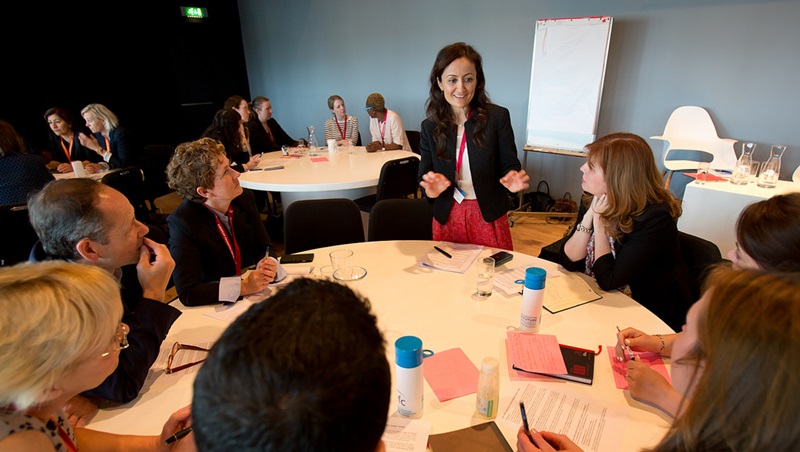There was a good turnout at the ‘What’s gender got to do with it?’ session on Friday morning. I think I counted more than 65 participants in the room at one point. But allow me to put a gender lens on this: less than ten of these participants were men(nine to be exact), meaning more than 90 per cent of us were female. This would make sense, if there was the same ratio of female participation amongst all AGA delegates. But I don’t think that’s the case.
What is it about putting the word ‘gender’ in a session title that drives the males
away? Does that automatically make this a niche conversation, relevant and
interesting to only a few? Because, actually, we spent the majority of our time
discussing education of Syrian refugees in Turkey and young offenders in the UK
criminal justice system. But I don’t want this to become some sort of man-bashing
blog, as my guess is it’s the same case across AGA sessions: foundations working on
migration attend the sessions on refugees, environmental funders head for the
climate change discussion, those addressing disability issues seek each other out,
etc.
For all the talk flying around about European foundations collaborating more,
breaking down silos, stretching our mandates, is this really happening? Or are we
all quite comfortable to keep attending the same kinds of conversations year after
year, with more or less the same people present – who tend to reconfirm our own
worldviews and the rightness of our own beliefs and approaches.
We have been worrying about these kinds of things quite a bit lately at the Global Fund for Community Foundations, as coming up on 1st – 2nd December, we will be hosting the Global Summit on Community Philanthropy in Johannesburg. The Summit is aiming to position the global community philanthropy field more strategically with a range of different actors and donors, who in the past have overlooked the potential of this very powerful segment of civil society. The hope is that, as a result of the Summit, behaviours and attitudes will shift and that more resources and attention will flow in the direction of community philanthropy organizations around the world.
But how do we get the people to the Summit whom we want to infect with the spirit of
community philanthropy? As we have observed this week in Amsterdam, it’s easy to
have conversations with one’s supporters, partners, friends, donors, etc. – because
they already believe! – but how do you start a dialogue with the skeptics and
doubters? The Summit has the potential to be a game-changer: just as long as we
aren’t preaching to the choir.
Wendy Richardson is operations & communications director at Global Fund for Community Foundations.




Comments (3)
Believe it or not, 10% is a decent turnout compared to, say, 20 years ago in the U.S. and Europe and even today compared to many philanthropy conferences around the globe. Our global sector indeed has a massive way to go on this essential issue. Thanks for giving voice to this.
I apologize, all the men were attending the board café session - must admit the session name was a strategic choice...
Great post!